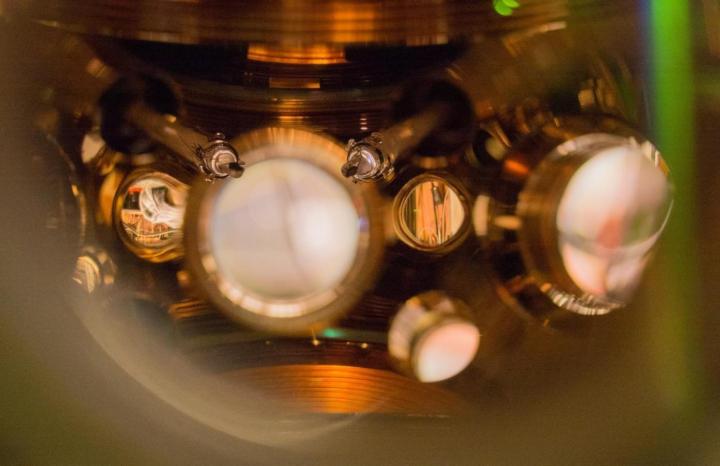
Here’s an (admittedly simplistic) explanation of how it works. At the very center of the clock, there’s a cluster of strontium atoms. These atoms are held in place with an array of laser beams that create what’s known as an optical lattice. Once they’re trapped in this lattice, the clock uses a stable red laser to make the atoms switch between two energy levels. This causes the strontium atoms to vibrate at an incredibly fast (and predictable) frequency — like an atomic metronome ticking out teeny, tiny fractions of a second.
To make the clock more accurate (meaning that it reflects the actual time it takes for a strontium atom to “tick”) and stable (meaning that its ticks are all alike), the researchers have worked to reduce the influence of heat from the clock’s surrounding environment, which can affect the speed at which the atoms respond to the laser. As a result of these improvements, the clock is now more than three times as precise as it was last year, when it set the previous world record.
The new clock is now so accurate that, as NPR said last year, it actually makes it difficult to know what time even is. The clock is accurate enough that it picks up on the slight differences in the passage of time and the force of gravity when it’s raised or lowered by just a couple centimeters (see: Einstein’s theories of relativity). That’s crazy, and also raises the question of whether or not the whole planet can really have one standard, super-accurate clock that speaks for us all. Technically speaking, time isn’t the same for people living at different elevations.
Chew on that one for a second.
Editors' Recommendations
- YouTube TV reaches deal with NBCUniversal, won’t lose channels
- Honda Clarity Electric gets unplugged, won’t return for new model year
- If a $5 billion fine won’t get Facebook under control, what will?
- Polestar electric vehicle won’t lose $7,500 tax credit because of Volvo sales
- Motorola’s Moto G7 range offers compelling phones that won’t break the bank




